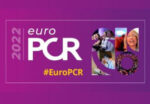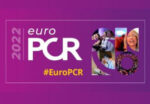New revascularization after coronary artery bypass graft (CABG) is often needed, be it because of severe bridge lesion, intimal hyperplasia, thrombosis, atherosclerosis, or native vessel lesion progression. We therefore need to determine the best revascularization strategy, namely native or graft percutaneous intervention, venous or arterial, or repeat surgery, with the risk it entails. There is...
The Current Role of Thrombus Aspiration in Primary PCI
In general, thrombus aspiration in acute myocardial infarction (AMI) has not been shown beneficial by large studies. It could even be prejudicial, since it has been associated with stroke. However, there are certain scenarios where the presence of a significant number of these prevents us from reaching adequate TIMI flow 3, or is associated with...
Using Biolimus-Coated Balloons for Treating Small-Vessel Disease Yields Promising Results
Drug-eluting balloons have demonstrated safety and effectiveness in the treatment of small-vessel coronary artery disease and in-stent restenosis. However, randomized studies were performed using paclitaxel. Several studies have shown that using biolimus, a semisynthetic analog of sirolimus, optimizes drug delivery in both stents and balloons. The aim of this randomized, multicenter study was to evaluate...
TAVR, More Information Supports Its Use
TAVR has been reported beneficial in the treatment of high and intermediate risk patients but, initially, randomized clinical trials have shown vascular complication and pacemaker implantation rates higher than SAVR in low-risk patients. This will most certainly improve as operator experience and device development advance. This is a randomized 1:1 study including 458 patients receiving...
When is the Ideal Timing for NSTE-ACS Percutaneous Intervention?
According to the European Society of Cardiology (ESC Guidelines 2021) an early invasive strategy is recommended (<24h) for high-risk patients with acute coronary syndrome with no ST elevation (NSTE-ACS), namely patients presenting a rise or fall in cardiac troponin, dynamic ST- or T-wave changes and GRACE risk score >140. Early intervention (<2h) is reserved for...
Revascularization Using DES in Infrapopliteal Disease: Meta-Analysis and Change of Paradigm?
Peripheral vascular disease (PVD) has been under-studied and under-recognized in comparison with ischemic heart disease and stroke, despite its well-known impact on quality of life and its associated morbidity and mortality. According to a systematic review, it was estimated that in 2015 about 238 million people globally had PVD. This number is on the rise....
EuroPCR 2022 | The MITRA TUNE Registry
Left atrial enlargement with or without atrial fibrillation (AF), absence of valvular degeneration, and heart failure with preserved function have recently been identified as functional atrial mitral regurgitation (MR). This subtype of secondary MR currently appears to be underdiagnosed, and the need for treatment in the general population might be greater than predicted. The aim...
EuroPCR 2022 | Real World Outcomes on Edge-to-Edge Tricuspid Valve Repair: 30 Day Outcomes of the TriClip bRight
This study was carried out to assess the safety and efficacy of the TriClip (edge-to-edge repair) in patients with severe tricuspid regurgitation with persistent symptoms despite medical treatment and high surgical risk. It is a prospective multicenter single arm study including 300 patients of mean age 78±7.6; 7.7% presented prior aortic intervention and 28% prior...
SOLACI Present at the Main Interventional Cardiology Meetings in the World
Once more, the Latin American Society of Interventional Cardiology (SOLACI) will attend two of the most important annual meetings in the field: the EuroPCR 2022 and the SCAI 2022 Scientific Sessions. The society will take part in with 2 challenging joint sessions to shar the Latin American reality in different areas of interest within the...
Should We Start Using OCT in Myocardial Infarction with Non-Obstructive Lesions?
In ST elevation MI, the common assessment methodology continues to the angiography; however, we all know it has certain limitations, especially when it comes to intermediate lesions or coronary dissections. Using imaging, especially high resolution such as OCT, has been looked into by some studies, but never randomized studies. The EROSION III is a randomized...









